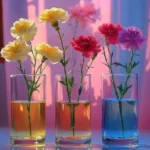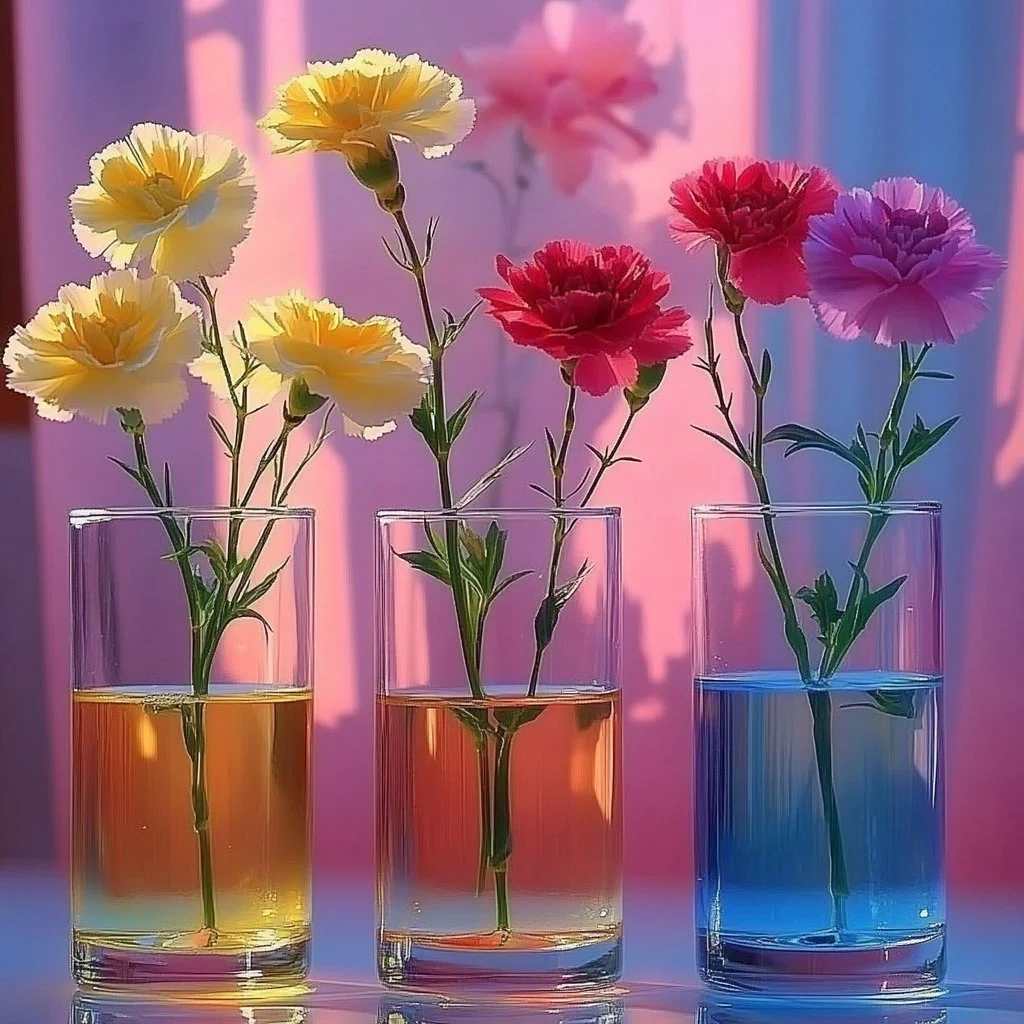Introduction
Color changing flowers are a delightful and engaging way to explore the wonders of science and nature right from your home. This captivating experiment not only brings a splash of vibrant colors to your living space but also offers an educational glimpse into how plants absorb water and nutrients. By using simple household items, you can create an eye-catching display that demonstrates the principles of capillary action. Whether you’re a parent looking for a fun activity to do with your children, a teacher aiming to captivate young minds, or a curious individual eager to experiment, color changing flowers are sure to impress. Let’s dive into this delightful DIY project that combines creativity and science!
Why You’ll Love This Color Changing Flowers Experiment
- Visual Learning: Witness firsthand how plants transport water.
- Engaging Activity: Perfect for kids and family engagement, sparking curiosity.
- Easy to Execute: Requires minimal materials that you likely have at home.
- Customization: Experiment with different flower types and food coloring combinations.
- Science at Home: Incorporate lessons in biology and chemistry in a fun way.
Materials
- Fresh white flowers (such as carnations or daisies)
- Clear water
- Food coloring (variety of colors)
- Clear vases or containers
- Knife or scissors (for cutting stems)
Step-by-Step Instructions
1. Prepare the Flowers
- Select fresh white flowers and trim the stems at an angle using a knife or scissors. This allows for better water absorption.
- Remove any leaves that will be below the water line to prevent bacterial growth.
2. Mix the Color Solution
- Fill each clear vase or container with water, leaving enough space for the flower stems.
- Add several drops of your chosen food coloring to each vase. The more drops you use, the more vibrant the colors will be.
3. Place the Flowers
- Carefully place the prepared flowers into the colored water, ensuring they are fully submerged.
- Pay attention to the changing hues of the petals as they begin to absorb the colored water.
4. Observe the Changes
- Watch as the flowers change color over the next few hours.
- Check back periodically to observe how the colors deepen and spread through the petals.
Tips & Variations
- Customize Colors: Experiment with different food coloring combinations to create new shades.
- Use Different Flowers: Try using other white flowers or even celery to see how they absorb water.
- Timing: For the best results, leave the flowers in the colored water overnight.
- Edible Version: Replace food coloring with natural dyes from fruits, vegetables, or herbs for an edible variation.
Frequently Asked Questions
Q: Can I use any kind of flower for this experiment?
A: While white flowers like carnations and daisies work best, you can experiment with other varieties!
Q: How long will it take for the colors to change?
A: You’ll start seeing changes within a few hours, but for a more dramatic effect, leave them overnight.
Q: What if I don’t have food coloring?
A: You can use natural dyes made from fruits and vegetables—just be aware the colors might not be as vibrant.
Q: Can I reuse the flowers after the experiment?
A: It’s best to discard the flowers after the experiment, as they may not be in the best condition for further use.
Serving Suggestions or Pairings
Serve your color changing flowers alongside a refreshing drink, like lemonade or herbal tea, to enhance your guests’ experience. These colorful blooms make a perfect centerpiece for summer picnics or parties, and pair wonderfully with light appetizers or desserts.
Final Thoughts
Color changing flowers are a charming blend of science and nature, perfect for sparking curiosity and creativity. Easy to execute with minimal materials, this experiment is both educational and visually stunning. We’d love to hear about your experiences! Feel free to share your colorful creations or leave a comment below!
Print
Color Changing Flowers Experiment
- Total Time: 190 minutes
- Yield: Varies (number of flowers used)
- Diet: N/A
Description
A delightful DIY project that explores capillary action using fresh flowers and food coloring.
Ingredients
- Fresh white flowers (such as carnations or daisies)
- Clear water
- Food coloring (variety of colors)
- Clear vases or containers
- Knife or scissors (for cutting stems)
Instructions
- Prepare the Flowers: Select fresh white flowers and trim the stems at an angle. Remove any leaves below the water line.
- Mix the Color Solution: Fill vases with clear water and add several drops of food coloring.
- Place the Flowers: Place the prepared flowers into the colored water.
- Observe the Changes: Watch as the flowers begin to change color over the next few hours.
Notes
Experiment with different flower types and food coloring combinations for unique results.
- Prep Time: 10 minutes
- Cook Time: 180 minutes
- Category: Science Experiment
- Method: DIY Experiment
- Cuisine: N/A
Nutrition
- Serving Size: 1 flower display
- Calories: 0
- Sugar: 0g
- Sodium: 0mg
- Fat: 0g
- Saturated Fat: 0g
- Unsaturated Fat: 0g
- Trans Fat: 0g
- Carbohydrates: 0g
- Fiber: 0g
- Protein: 0g
- Cholesterol: 0mg

